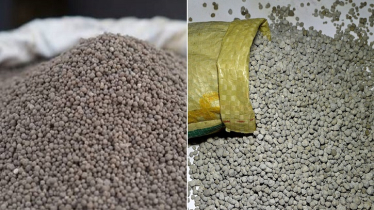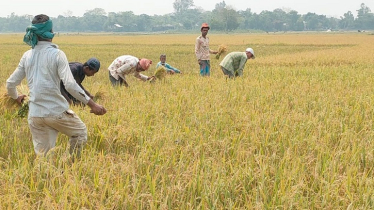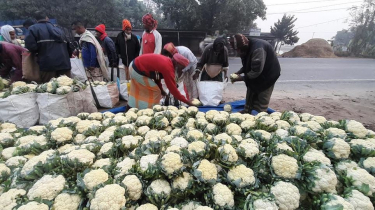
Dhaka, Bangladesh: The Bangladesh Rice Research Institute (BRRI) has recently developed six new rice varieties that can be cultivated in adverse environmental conditions. Agricultural scientists expect these varieties to significantly impact national food production, thanks to their higher yields and better resilience compared to existing stress-tolerant varieties.
Currently, about 18–20% of the country’s 0.47 million hectares of fallow land (approximately 5.5% of total land) is already being utilized using stress-tolerant rice varieties. The newly developed varieties are expected to bring an additional 20–25% of fallow land under cultivation.
The National Seed Board (NSB), the key policymaking and coordinating authority for seeds in Bangladesh, has officially released the new varieties. These include:
-
Tidal flood-tolerant variety - BRRI Dhan 109
-
Flash flood-tolerant variety - BRRI Dhan 110
-
Lowland flood-tolerant variety - Joli Aman BRRI Dhan 111
-
Salinity-tolerant variety - BRRI Dhan 112
-
High-yielding Boro variety - BRRI Dhan 113
-
Blast disease-resistant variety - BRRI Dhan 114
Highlights of the New Varieties:
-
BRRI Dhan 109 was developed by crossbreeding BRRI Dhan 44 and BRRI Dhan 52. Initially tested in BRRI's research fields, it was later piloted in farmers' fields in tidal flood-prone areas during 2020, 2021, and 2022. The average yield in these areas was 5.40 tons per hectare, compared to 4.50 tons from other varieties.
-
BRRI Dhan 110, suitable for flash flood-prone regions, matures in 123 days in normal conditions and 133 days in flood-affected areas. It yields 20.5% more than BINA Dhan 11.
-
Joli Aman BRRI Dhan 111, suitable for lowland areas, has higher yields compared to BRRI Dhan 91 and local Aman varieties.
-
BRRI Dhan 112 is a salinity-tolerant Aman variety that can withstand saline conditions for up to three weeks.
-
BRRI Dhan 113, a high-yielding Boro variety, is positioned as an alternative to BRRI Dhan 29. It offers an 11.5% higher yield than BRRI Dhan 88, with an average of 8.15 tons per hectare.
-
BRRI Dhan 114 is resistant to blast, a fungal disease affecting rice. This Boro variety yields an average of 7.76 tons per hectare and contains genes for long-term blast resistance.
Dr. Mohammad Khalequzzaman, Director General of BRRI, emphasized, “Given the increasing threats from climate change, we’ve prioritized the development of climate-resilient rice varieties. Sudden floods, droughts, and salinity are our major concerns.”
With the inclusion of these new varieties, BRRI has now developed a total of 121 rice varieties, eight of which are high-yielding hybrids.
According to Dr. M. Abdul Momin, Protocol Officer at BRRI, “The existing 32 climate-resilient rice varieties have already brought 18–20% of fallow land under cultivation. These new varieties are expected to bring an additional 20–25% into production.”
Compared to previous stress-tolerant varieties that could survive submerged for up to 18 days, the new varieties can withstand over 21 days of waterlogging. The new salinity-tolerant BRRI Dhan 113 outperforms BRRI Dhan 88 by more than 12%, with yields reaching 7 tons per hectare.
Dr. Khondaker M. Iftekharuddaula, Chief Scientific Officer and Head of the Plant Breeding Division at BRRI, said, “We’ve identified five regions—Barishal, Sylhet, Rangamati, Cox’s Bazar, and Bhola—as suitable for cultivating these stress-tolerant rice varieties. However, it’s difficult to estimate exactly how much area will come under these new varieties initially.”
Director General of the Department of Agricultural Extension (DAE), Saiful Alam, stated, “I hope these stress-tolerant varieties will play a crucial role in boosting food production by bringing more fallow land under cultivation.”
Bangladesh has a total land area of approximately 14.84 million hectares. Of this, around 3.74 million hectares (25%) are not used for agriculture, instead being occupied by urban areas, infrastructure, and rural settlements.
Although the cultivable land decreased from 8.85 million hectares in 1985 to 7.84 million hectares in 2011, the total cropping area has increased to 14.95 million hectares due to multiple cropping on the same land—some lands now yield two, three, or even four crops a year.





